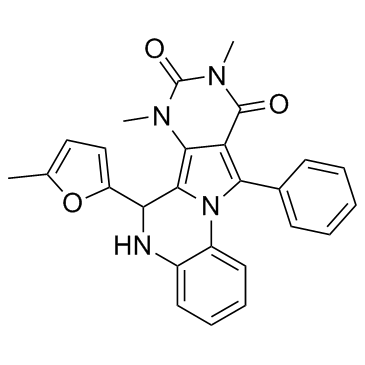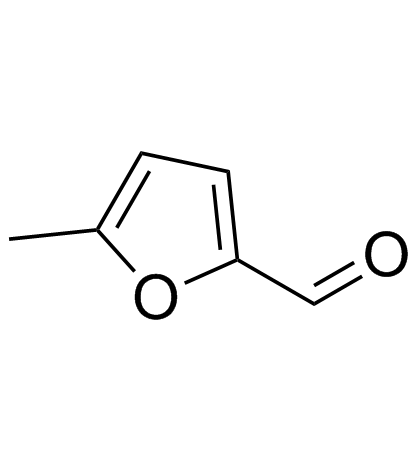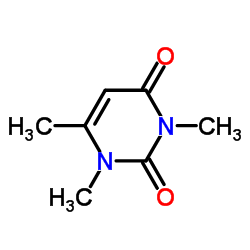931706-15-9
| Name | 7,9-Dimethyl-6-(5-methyl-2-furyl)-11-phenyl-6,7-dihydropyrimido[4 ',5':3,4]pyrrolo[1,2-a]quinoxaline-8,10(5H,9H)-dione |
|---|---|
| Synonyms |
7,9-Dimethyl-6-(5-methyl-2-furyl)-11-phenyl-6,7-dihydropyrimido[4',5':3,4]pyrrolo[1,2-a]quinoxaline-8,10(5H,9H)-dione
Pyrimido[4',5':3,4]pyrrolo[1,2-a]quinoxaline-8,10(5H,9H)-dione, 6,7-dihydro-7,9-dimethyl-6-(5-methyl-2-furanyl)-11-phenyl- 7.9-Dimethylxanthin 7,9-dimethoxy-5H-pyrido<3,2-c>azepine 7,9-dimethylxanthine 7,9-dimethyl-2,6-dioxo-1,2,3,6-tetrahydro-purinium betaine 7,9-Dimethyl-2,6-dioxo-1,2,3,6-tetrahydro-purinium-betain 7,9-dimethoxy-5H-pyrido<3,2-c>-azephine 3,9-dimethylxanthine PPQ-102 |
| Description | PPQ-102 is a potent CFTR inhibitor which can completely inhibited CFTR chloride current with IC50 of ~90 nM. IC50 value: 90 nM [1]Target: CFTRin vitro: The most potent compound, 7,9-dimethyl-11-phenyl-6-(5-methylfuran-2-yl)-5,6-dihydro-pyrimido[4',5'-3,4]pyrrolo[1,2-a]quinoxaline-8,10-(7H,9H)-dione, PPQ-102, completely inhibited CFTR chloride current with IC(50) approximately 90 nM. The PPQs, unlike prior CFTR inhibitors, are uncharged at physiological pH, and therefore not subject to membrane potential-dependent cellular partitioning or block efficiency. Patch-clamp analysis confirmed voltage-independent CFTR inhibition by PPQ-102 and showed stabilization of the channel closed state [1]. The three gpSlc26 anion transporters exhibited distinct pharmacological profiles of (36)Cl(-) influx, including partial sensitivity to CFTR inhibitors Inh-172 and GlyH101, but only Slc26a11 was inhibited by PPQ-102 [2]. Airway epithelial NCI-H292 cells and primary cultures of noncystic fibrosis human airway epithelial cells were treated with cystic fibrosis transmembrane conductance regulator (CFTR) inhibitors (CFTR-inh(172) or PPQ-102) or transfected with a CFTR small interfering (si)RNA with or without a selective epidermal growth factor receptor tyrosine kinase inhibitor [3].in vivo: PPQ-102 prevented cyst expansion and reduced the size of preformed cysts in a neonatal kidney organ culture model of polycystic kidney disease. PPQ-102 is the most potent CFTR inhibitor identified to date [1]. |
|---|---|
| Related Catalog | |
| References |
| Density | 1.4±0.1 g/cm3 |
|---|---|
| Boiling Point | 648.7±65.0 °C at 760 mmHg |
| Molecular Formula | C26H22N4O3 |
| Molecular Weight | 438.478 |
| Flash Point | 346.1±34.3 °C |
| Exact Mass | 438.169189 |
| PSA | 74.10000 |
| LogP | 3.48 |
| Appearance | white solid |
| Vapour Pressure | 0.0±1.9 mmHg at 25°C |
| Index of Refraction | 1.720 |
| Storage condition | -20℃ |
|
~82% 
931706-15-9 |
| Literature: Snyder, David S.; Tradtrantip, Lukmanee; Yao, Chenjuan; Kurth, Mark J.; Verkman Journal of Medicinal Chemistry, 2011 , vol. 54, # 15 p. 5468 - 5477 |
|
~% 
931706-15-9 |
| Literature: Snyder, David S.; Tradtrantip, Lukmanee; Yao, Chenjuan; Kurth, Mark J.; Verkman Journal of Medicinal Chemistry, 2011 , vol. 54, # 15 p. 5468 - 5477 |
|
~% 
931706-15-9 |
| Literature: Snyder, David S.; Tradtrantip, Lukmanee; Yao, Chenjuan; Kurth, Mark J.; Verkman Journal of Medicinal Chemistry, 2011 , vol. 54, # 15 p. 5468 - 5477 |
|
~% 
931706-15-9 |
| Literature: Snyder, David S.; Tradtrantip, Lukmanee; Yao, Chenjuan; Kurth, Mark J.; Verkman Journal of Medicinal Chemistry, 2011 , vol. 54, # 15 p. 5468 - 5477 |
|
~% 
931706-15-9 |
| Literature: Snyder, David S.; Tradtrantip, Lukmanee; Yao, Chenjuan; Kurth, Mark J.; Verkman Journal of Medicinal Chemistry, 2011 , vol. 54, # 15 p. 5468 - 5477 |
| Precursor 4 | |
|---|---|
| DownStream 0 | |





